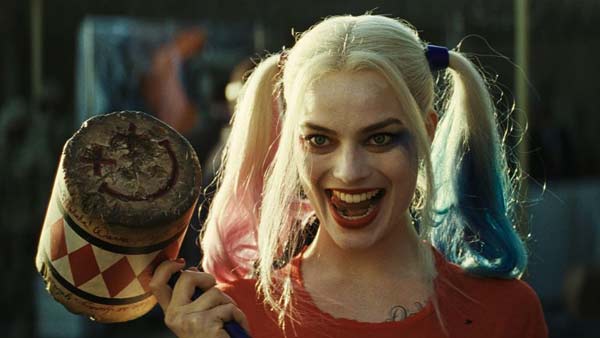Los Angeles, US (BBN) – In a lot of ways, “Gotham City Sirens” – the all-female villain film that will reteam “Suicide Squad” director David Ayer with star Margot Robbie – feels like an inevitability for DC’s emerging superhero cinematic universe.
It’s not just that Margot Robbie’s Harley Quinn was, hands down, the breakout character of this summer’s “Suicide Squad”, reports The Hollywood Reporters.
(Arguably, of all this year’s superhero movies in total; despite the critical response to “Suicide Squad” overall, was any new character as fun as Harley?)
Nor is it that female-led movies is the one area where the DC movies are outpacing Marvel – next year’s “Wonder Woman” will be the fourth in the sequence of DC movies, whereas Marvel still hasn’t announced the director of “Captain Marvel,” its first female-led solo movie, currently scheduled to be the 21st release from the Marvel Cinematic Universe.
That last fact, at least, feeds into another item that points at the way in which “Sirens” feels appropriate: that DC has traditionally led Marvel in terms of female-led comic books.
Marvel might have had the first all-female superhero team – the “Lady Liberators,” who existed for all of one issue in the 1970s (1970’s “Avengers” No. 83) – but the company didn’t offer an all-female team comic until.
2013’s “Fearless Defenders” comic book series, by which point DC’s Birds of Prey had been in existence for close to 20 years.
That title launched in 1996, but was hardly breaking new ground – the awkwardly titled independent comic “Femforce’ had run since 1985.
The fact that “Gotham City Sirens” had been in DC’s portfolio since 2009, when it was created by writer Paul Dini and artist Guillem March as a replacement for the recently ended “Catwoman” comic, also makes the new movie feel more like a fait accompli than might otherwise be the case.
(The comic book Sirens followed in the footsteps of “Gotham Girls,” a 2000-2002 online animated spinoff from the “Batman” animated series which featured many of the same characters, albeit outside of a group context.)
One of the more fascinating things about the DC cinematic structure is the way in which it refuses to move in a straight line.
The sequel to “Man of Steel” isn’t “Man of Steel 2” or “Man of Steel”: “Insert Subtitle Here,” it’s “Batman v. Superman”: “Dawn of Justice” which then leads to “Justice League” and “Suicide Squad,” instead of “Batman v. Superman 2”.
(Well, Superman is dead, after all.) Of all the movies announced for the franchise between now and 2020, only one was a traditional “sequel” – and even that, the movie formerly known as “Justice League Part 2,” has since been stripped of that title and pushed back in the schedule.
Based on the evidence so far, it shouldn’t come as any surprise that the follow-up to “Suicide Squad” is “Gotham City Sirens.”
(I fully expect that “Justice League Part 2” will be retitled “Justice League vs. Suicide Squad” when it eventually appears, for what it’s worth.)
More to the point, however, the cinematic “Sirens” follows the established model of Warners’ current DC Films schedule, and offers the possibility to address a lingering concern left over from “Suicide Squad” in a way that allows any future “Squad “project to move forward, unimpeded.
By pulling Harley out of the “Suicide Squad” – and just as importantly, placing her back into Gotham City – for her second appearance, however, “Sirens” offers a chance to address the lingering Joker subplot of “Squad” once and for all.
A criticism of Harley’s portrayal in that movie (and, for a long time, in her comic book and animated incarnations as well) has been that her relationship with the Joker is unhealthy, and strips the character of true agency – around him, she surrenders into a role that objectifies her and weakens her.
Where better to address that complaint, and break Harley free of the Joker’s influence, than in a movie where the character is backed up by other female super-villains?
If this is the direction that director Ayer and the producers want to go in, “Sirens” works as a property because it places Harley in the orbit of Poison Ivy, who has proven to be a competitive love interest for Harley in the comic book mythos, as well as the sole character in both comics and cartoons that can demonstrate to Harley that there is life away from the Joker.
(Should that be the direction DC chooses to move in, it’ll mean that the studio offers LGBT leads before Marvel, breaking new ground in a crowded marketplace once again; something that surely makes it a more attractive proposition.)
Done properly, a “Gotham City Sirens” projects would push one of DC’s most successful, beloved characters further into the forefront, underscore the studio’s commitment to onscreen diversity in a genre that, to date, has been frustratingly conservative and continue to build the wider world of the DC Extended Universe and populate it with fan-favorite characters.
Looked at that way, it’s at least a win/win opportunity, if not an outright inevitability.
BBN/MS/ANS

No Subscription? You Are Missing Out!
Join the business leaders of Bangladesh who rely on BBN's original reporting and in-depth analysis on business scenario of the country. We send only one daily email. No Spam Guaranteed!









